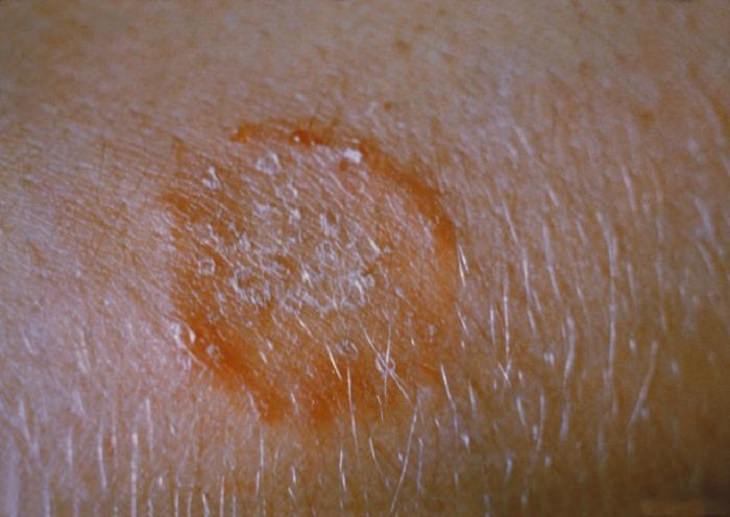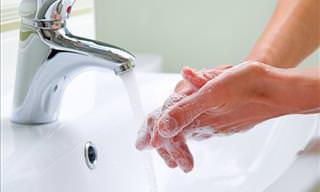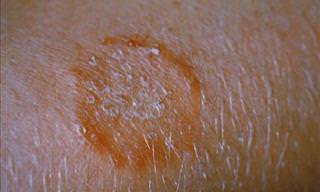Recognizing Ringworm
The symptoms vary depending on where you have been infected. With a skin infection, you might experience the following:
• Red, itchy, scaly, or raised patches
• Patches that develop blisters and begin to ooze
• Patches that are redder on the outside edges or resemble a ring
• Patches with edges that are defined and raised
If you’re experiencing dermatophytosis in your nails, they might become thicker or discolored, or they might begin to crack. If your scalp is affected, the hair around it might fall out, and bald patches may develop.
What Types of Ringworm Are There?
Tinea barbae: Ringworm of the bearded area of the face and neck. Swelling and marked crusting is often accompanied by itching, sometimes causing the hair to fall off. In the days when men went to the barber for a shave, tinea barbae was known as barber’s itch.
Tinea capitis: Ringworm of the scalp that commonly affects children. It appears as scalp scaling that is associated with bald spots.
Tinea corporis: Ringworm of the body that often appears as patches with the characteristic round ring shape.
Tinea cruris: Ringworm infection of the skin around the groin, buttocks, and inner thighs. It’s most common in men and adolescent boys.
Tinea pedis: Ringworm infection of the foot. It’s frequently seen in people who go barefoot in public places where the infection can easily spread, such as locker rooms, showers, and swimming pools.
How Do You Get Ringworm?
Ringworm is highly contagious. It can be caught in any of the following ways:
• From another person after skin-to-skin contact.
• From your pets. Always wash your hands after you have touched your pets. It’s also very common in cows.
• By touching objects. The fungus that causes ringworm can linger on clothes, towels, surfaces, and in combs and brushes.
• From soil. If you’re working or standing barefoot in soil that’s infected with the fungus that causes ringworm, you can get it, too.
How Do I Know If I Have Ringworm?
You’ll have to visit your doctor to be sure that the infection is ringworm. There are a number of other skin conditions that look just like it.
Your doctor will diagnose ringworm by examining your skin and possibly using a black light to view your skin in the affected area. The fungus will glow under black light. If you’re infected, the areas of the skin where the fungus is located will glow.
Your doctor might also scrape some skin from the itchy, scaly areas, and look at them under a microscope.
What’s the Treatment?

How the infection is treated depends on where and how bad it is. In most cases, the doctor will recommend an over-the-counter medicine you can find at the drugstore. If the ringworm is on your skin, an OTC antifungal cream, powder, or lotion should work just fine. Some of the more popular ones are clotrimazole and miconazole.
In the majority of cases, you’ll have to use the medicines on your skin for 2-4 weeks to make sure that the fungus has been fully destroyed. This will lower the chances of it returning.
If you have ringworm on your scalp or in many different places on your body, OTC treatments probably won’t be enough. The doctor will have to give you a prescription for oral medication such as ketoconzaloe, terbinafine, or griseofulvin.
Home Care
In addition to over-the-counter and prescription medication, your doctor might recommend that you care for your infection at home by practicing some of the following behaviors:
• Avoid clothing that irritates the infected area.
• Cover the infected area with a bandage if you’re unable to avoid clothing that irritates the area.
• Wash bedding and clothes daily during an infection to disinfect your surroundings.
• Clean and dry your skin regularly.
Preventing Ringworm
The fungi that cause it are everywhere. Still, here are some things that you can do to decrease your chances of getting ringworm or stopping it from spreading:
• Keep your skin clean and dry.
• Wear flip-flops in locker rooms and public showers.
• Change your socks and underwear once a day, at the least.
• Don’t share clothes or towels with someone who has ringworm.
• Wash your hands with soap and water after playing with pets.
Source: medicinenet, webmd, and healthline
Images: depositphotos
 Go to BabaMail
Go to BabaMail


























